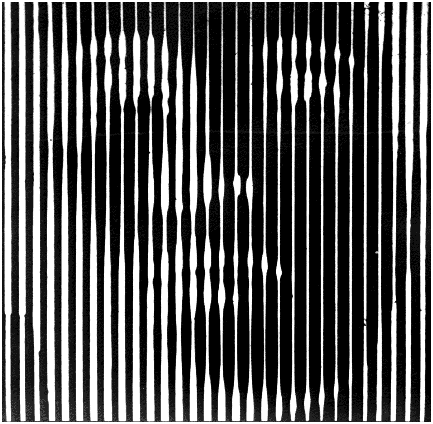Psychosomatic
Headache
 During the first three weeks, the subject obeyed these instructions a half dozen times by excusing herself from her work, returning to her room and falling asleep. She would remain in this sleep from two to three hours and then rouse up and seem refreshed and comfortable. Several check-ups during periods when she was "sleeping" disclosed her to be in a trance state, but not in good rapport with the writer.
During the first three weeks, the subject obeyed these instructions a half dozen times by excusing herself from her work, returning to her room and falling asleep. She would remain in this sleep from two to three hours and then rouse up and seem refreshed and comfortable. Several check-ups during periods when she was "sleeping" disclosed her to be in a trance state, but not in good rapport with the writer.During the fourth week, a new procedure was introduced. This was also in the form of a post-hypnotic suggestion to the effect that on a certain day, at a specified hour, she was to develop a severe headache. As this developed, she was to fight against it and to persist in working until she could no longer stand it. Then she was to go hastily to her room and obey the first series of suggestions.
These instructions were carried out fully. At 1 p.m. on that day, three hours after her headache had begun, she returned to work adjusted socially in a satisfactory fashion. Her only complaint was a comment on her ravenous hunger, since she had missed her lunch. On previous occasions, such an event had often been seized upon to justify her irritability. Thus, she had been given experiential proof of the effectiveness of hypnotic suggestion and of the possibility of a good therapeutic response.
About a week later, in another trance state, she was given post-hypnotic instructions to develop at a given time the emotional disturbance that often presaged a headache. As this developed she was to resist it, to control her tongue except for a few disagreeable remarks, and finally to develop an overwhelming desire to return to her room, to which she would finally yield. There she was to follow the routine suggested previously.
All instructions were obeyed and after nearly three hours of sleep, she returned to her work in a pleasant frame of mind.
These two special trance sessions were purposely included in the course of therapeutic or instructive trances as a measure of forcing the subject to act responsively upon the earlier trance instructions. Subsequent trance states in which the suggestions cited above were given were augmented in force by references to the experiential values of the post-hypnotically induced headache and emotional disturbances, and the benefits of following instructions. In addition, every effort was made to impress upon her the future effectiveness of the general procedure and the desirability of yielding at once to the post-hypnotic suggestions.
The last trance session was devoted to a general review of the instructions given to her, the post-hypnotic disturbances suggested, her learned ability to meet the whole general problem, and the future applicability of the procedure in the event of further headaches and emotional disturbances. Repeatedly during trance sessions, efforts were made to learn the content of her thinking during the periods of mental aggression, but she proved uncommunicative. It was, she declared, "too terrible" to relate.
Questioning in the waking state disclosed her to have a complete amnesia for all except the superficial facts that she had been hypnotized repeatedly and that there had been a number of occasions on which she felt a headache developing, and that this had been warded off by a compulsive need to sleep. Every effort to secure additional data from her failed. She did attribute her change in behavior to the hypno- sis, but was not curious about what had been done.
More than 15 years have elapsed and the therapeutic outcome has been good. She secured a position in another part of the country and has been promoted progressively until she is now a departmental head. Each Christmas, a greeting card expressing briefly her gratitude is received. Occasionally, she sends a business letter asking for references concerning somebody the writer knows, or recommending to him someone needing therapy or a job placement. One additional fact is that acquaintance has been made with several persons who have worked for her. They have been found to entertain the highest regard, personal liking and respect for her and to be most enthusiastic about her charming personality, In response to a specific letter of inquiry, she stated that she had on the average three headaches a year, but that these responded readily to brief rest. She expressed the belief that these headaches were "different" from her former headaches and attributed them to reading without her glasses.
She is now in her early 40's,unmarried, wholly content, absorbed in her work and the creature comforts of her tastefully decorated apartment. She was described by a competent psychiatrist who knew her well (but nothing off the above history) as follows, "She's just one of those delightful people you like to number among your friends. She looks upon men as charming companions but nothing more. She's most enthusiastic about her work and inspires everyone who works under her. After the day is over, she likes her home, or the theater, or concerts, or has some of us in for a social evening. She is content and happy. You must have enjoyed knowing her."
Hypnosis and Therapy
Milton Erickson
©1967 Grune & Stratton